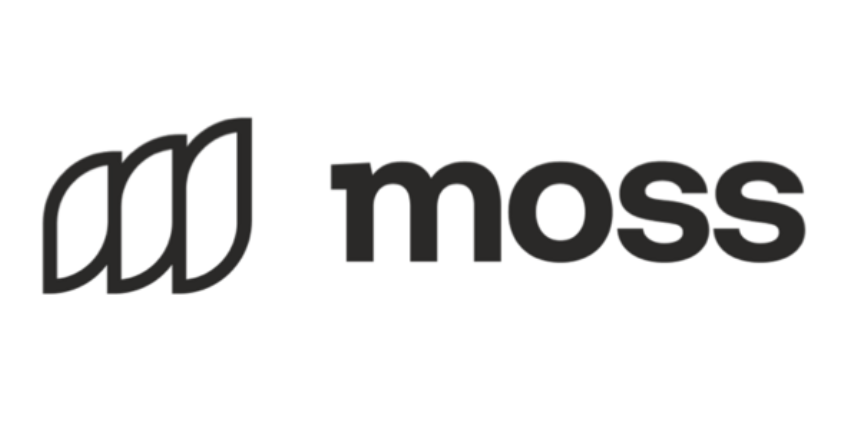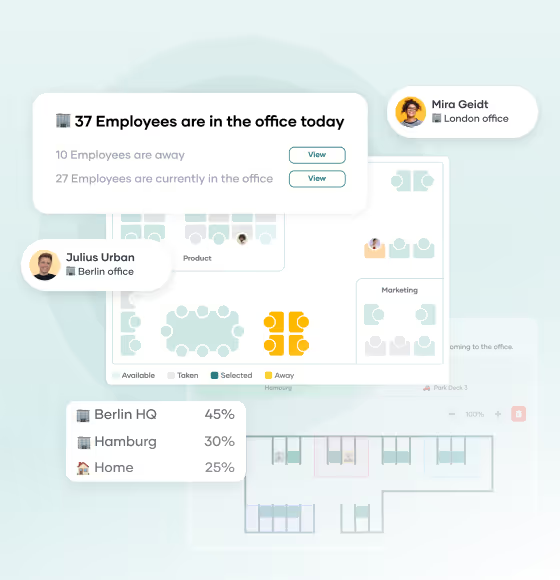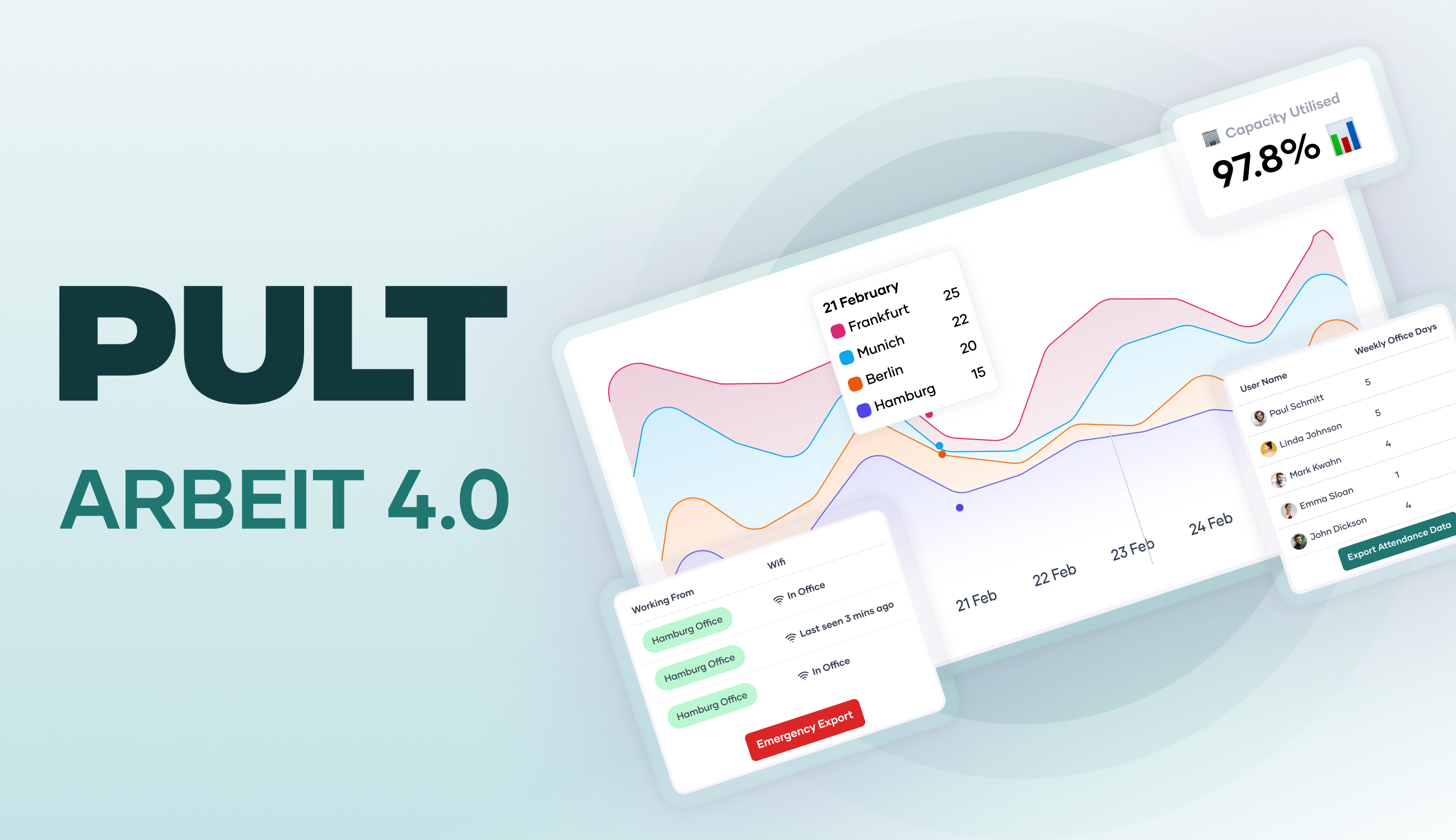Measuring and increasing office utilization without sensors

Office utilization: TL;DR
- Usage patterns: The busiest days are Tuesday and Wednesday. Monday and Friday are significantly less busy.
- Measuring office utilization: Reliable results are obtained through genuine attendance tracking. Booking data helps, but is prone to errors due to no-shows.
- Increasing office utilization: Better office utilization is achieved through attractive working environments, good facilities, and offerings that surpass the comfort of working from home.
What is office utilization?
Office utilization describes the proportion of actually used workstations or space in relation to the total available capacity within a specific period.
It is an important indicator of the efficiency of office space, comparable to hotel occupancy or production line utilization. It is measured as a percentage based on a period of time, such as a week or month.
Office utilization is an important key performance indicator for workplace, real estate, and facility management. It enables:
- Decisions on space planning
- Targeted control of cleaning and energy use for heating, cooling, and ventilation.
- Optimization of workplace availability in terms of the number of team zones, etc.
Calculation formula for office utilization analytics:
Office utilization (%) = (occupied workstations × usage time) ÷ (available workstations × total time) × 100
This formula can be applied at the workplace, room, floor, or building level. For a correct assessment, average and peak values (peak utilization) should be considered separately.
How high is office utilization in companies?
Average office utilization in Europe is currently around 60 percent. A clear pattern can be seen in the distribution across the days of the week:
- Tuesday and Wednesday are the busiest days across Europe, with around 67 to 68 percent utilization.
- Thursday follows closely behind with around 65 percent.
- Monday and Friday remain significantly weaker.
These mid-week peaks are now considered a typical hybrid pattern and are an important factor in capacity and service planning in companies.
Parallel to the stagnating demand for space, an increase in vacancy rates can be observed in many European cities. Companies are increasingly concentrating their rental space on high-quality locations with good transport links and facilities suitable for new ways of working.
- The quantitative volume of space is declining, while qualitative demand is rising.
- Guidelines for planning and evaluation
How do I measure office utilization?
Office utilization is measured by combining real attendance data, booking information, and space utilization analyses.
Depending on the technical infrastructure, Wi-Fi detection, sensors, booking systems, or access data are used for this purpose. It is important that the data reflects actual usage, not just reservations.
Measuring actual attendance
The most reliable method of office utilization analysis is to track the actual attendance of employees in the office. In traditional systems, employees must check in reliably every day. A simpler and more reliable method is to use automatic check-in via Wi-Fi connection in the office space utilization software PULT Presence.
To do this, check-in is performed automatically as soon as your employees' laptops or smartphones connect to the existing company Wi-Fi. No intervention by employees is necessary.
- Wi-Fi detection: End devices (laptops or smartphones) automatically connect to the company network. These connections can be counted anonymously and show how many people are in the office at the same time.
- Advantage: No manual check-in necessary, high data quality, clear representation of actual presence.
- Data protection: Data is collected in aggregate form and in compliance with the GDPR; individual movement profiles are not created.
- Measurement period: Two to four weeks usually provide sufficient data to reliably calculate average and peak values.
This method is particularly suitable when real usage patterns are to be recorded instead of mere booking statistics.
Measurement via booking data
Office utilization can be assessed based on booking activity. This involves counting how often workstations or rooms are reserved and used. This is less accurate than actual attendance recording.
- Easily available when using booking software with office insights
- Meaningful for demand and planning trends.
Limitations:
- Bookings only reflect intended use, not actual attendance.
- No-shows (reservations without use) distort the results.
Tip: Automatically releasing unused bookings significantly improves data quality. In the office utilization software PULT, you can set the time period after which an unused booking is automatically canceled.
How can I increase office space utilization?
You can increase office utilization benchmarks by making it attractive and providing a positive workplace experience, thereby motivating your employees to return to the office. Your team will enjoy coming to the office if it offers something that working from home cannot: community, comfort, and attractive opportunities for balance and modern working.
What makes an office attractive?
An office is attractive when it offers space for different ways of working and meets people's needs for variety and balance. Instead of uniform rows of desks, companies today need diverse work zones:
- Multispace principle: Different areas for concentration, collaboration, discussions, and relaxation.
- High quality of stay: Comfortable lounges, well-equipped kitchens, snacks, drinks, and places to retreat increase well-being and extend the time spent in the office.
- Strengthening collaboration: The office serves as a social space. Team days are held and the freely configurable team zones are utilized.
- Quiet zones: Despite open spaces, acoustically protected retreats are needed. Many employees particularly appreciate the quiet of working from home. The office should also offer this advantage.
Offers for a high-quality workplace experience
A compelling workplace experience is created by the mutual complementarity of spaces, technology, and culture.
A. Spaces and zones
- Zoning and diversity: Separate areas for concentrated work, teamwork, breaks, and mental balance.
- Acoustic quality: Textile and acoustically effective surfaces, large and lush plants, and room dividers reduce noise.
- Team areas: Rollable and freely combinable furniture, whiteboards, and partition walls create convertible project zones.
- Phone booths & huddle rooms: Small, soundproof rooms where you can make phone calls without disturbing other colleagues.
- Biophilic design: Daylight, green plants, and natural materials measurably improve well-being.
B. Technology and equipment
- Ergonomic, standardized workstations: Every workstation should be equipped equally, with a monitor, docking station, and adjustable table.
- Reliable meeting technology: with excellent audio and video quality.
- Personal storage space: lockers, cubicles, rolling containers
- Space booking system: Fair workplace and room reservation
C. Services and culture
- Catering and food: A good selection of tea, coffee, and beverages, healthy and protein-rich snacks, canteen offerings
- Break and exercise areas: Lounges, sports or fitness zones with showers
- Cleanliness and hygiene: Clean, well-maintained areas are an expression of appreciation.

Measurements as the first step toward greater office utilization
The option of spending individual workdays in a home office has become standard for employees. At least, that is true for professions where it is actually possible. On the other hand, office utilization is also a valuable asset for you as an entrepreneur or manager, and one that has a direct financial impact.
The return to the office and thus the highest possible office utilization is best achieved through positive motivation. Coercion tends to lead to attrition. Any measures that make your office more attractive are considered suitable motivators. Offer your employees something that their homes cannot provide.
In order to free up space for lounges, team areas, quiet areas, or even sports rooms, you will need to rearrange the existing space and reduce the number of individual workstations. The first link in this chain is therefore to measure the current office utilization. And this is best achieved with Office Insights from the office utilization system PULT.
Important: As more colleagues return to the office, booking and attendance figures will naturally shift. Keep an eye on the trend in PULT, which is very easy to do using Office Insights.
By observing booking behavior, you can readjust the availability of individual workstations. This way, you can ensure that all employees can reliably book a free space at any time.
{{onpage-cta}}
What is good office utilization?
On average, utilization between 60 and 70 percent is considered balanced. This ensures that there is enough movement in the office without workstations standing empty. Values above this can sometimes lead to a shortage of sought-after resources, while significantly lower values can lead to unjustifiably large spaces.
How long should I measure office utilization to get a realistic picture?
A period of two to four weeks is usually sufficient. During this time, typical weekly patterns and usage peaks become apparent. However, be aware of possible seasonal fluctuations and typical vacation periods.
Can I also record office utilization without sensors?
Yes, you can do this via your company's Wi-Fi network or the booking data for workstations and rooms. Presence detection in PULT Presence records the presence of your employees as soon as their laptop or smartphone connects to the company Wi-Fi.
What is the difference between occupancy and utilization?
Occupancy describes how many workstations are assigned or reserved. Utilization shows how many of these are actually used. These values may differ if employees do not use their booking. PULT Presence offers independent and therefore reliable presence detection.
Is PULT compliant with data protection and GDPR regulations?
Yes, because PULT collects and evaluates data according to the required minimum principle. In addition, the evaluations do not allow any conclusions to be drawn about the behavior of individuals, so you can work with PULT in full compliance with GDPR regulations.
A new hybrid workplace experience is coming. Start Now. 🎉
Measure, monitor, and increase office attendance! Get started with PULT now.





















.avif)




